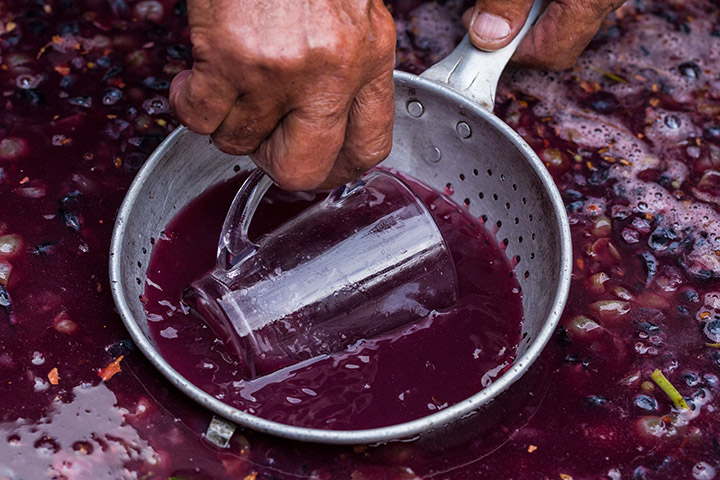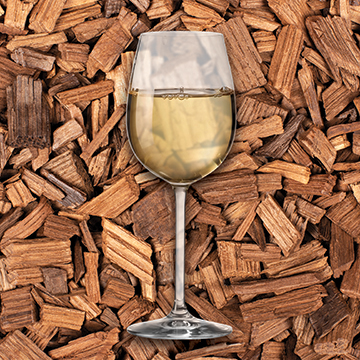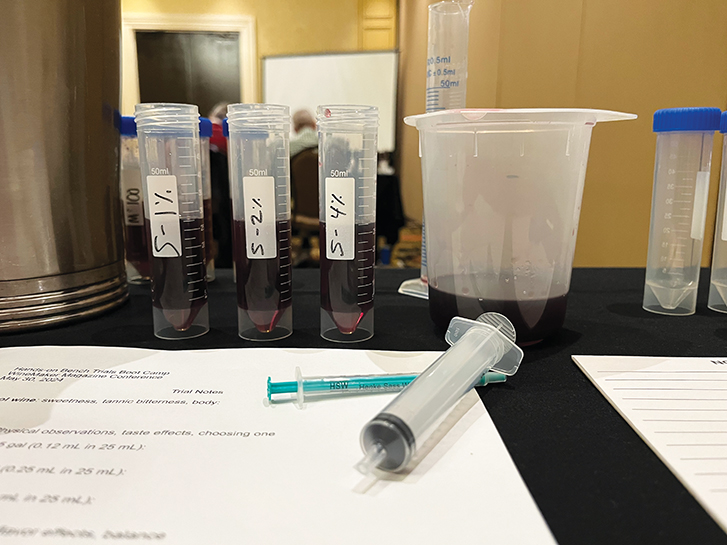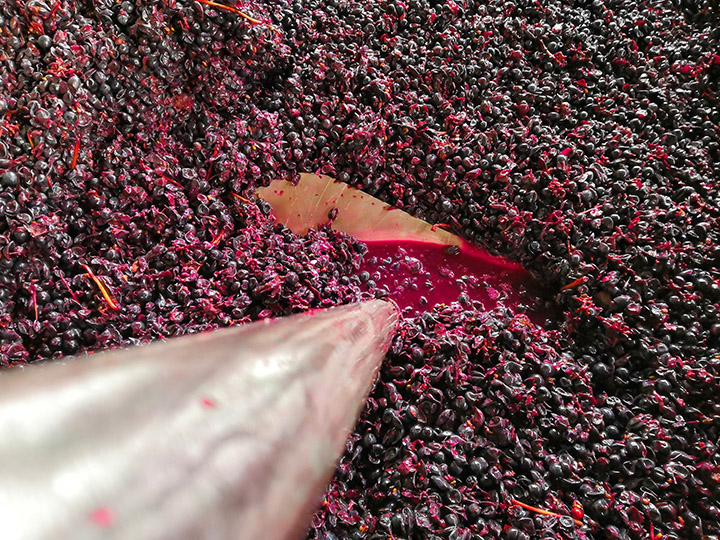When Wines Go Bad
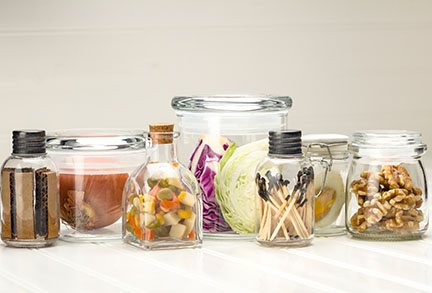
Whether you make wine at home, commercially, or simply enjoy drinking it, it’s likely you have encountered faulted wine; maybe it was the subtle aroma of geranium leaves, an aromatically muted glass pour, the unmistakable odor of barnyard, or perhaps you thought you poured yourself a glass of nail polish remover by mistake. Whatever your experience may be, recognizing that wines reveal faulted characteristics for various reasons, each indicative of something that went awry in the vineyard, cellar, transportation, or storage period, is key to a more thorough understanding of winemaking.
There are many books and articles focused on exploring these faults in detail exhaustively, which is why this article will serve as a simplified, practical reference when searching for a rudimentary explanation of the most common faults.
Before we delve in, we must first understand the difference between a flaw and a fault. A wine exhibits any number of flaws when at some point in the winemaking process something was (or was not) done that led to the finished product exhibiting a feature not desired for the style or varietal. Wine flaws are minor issues, though the wine may still be entirely acceptable and even enjoyable. Flaws can be visual (tartrate crystals, sediment, haze, minor carbonation in a non- sparkling wine); aromatic (volatile acidity, sulfur dioxide, Brettanomyces, lack of- or non-varietal aroma, reduced sulfur compounds at low levels, diacetyl, over-oaking); or flaws of flavor (searing acidity, unintended sweetness, exceedingly high or abnormally low alcohol levels).
There is no incontrovertible point at which a flaw becomes a fault, though there are well-studied thresholds, the point at which we understand a wine’s fault to be unquestionably recognizable and/or overpowering of any other characteristics in the wine. Simply put, faulted wine is a flawed wine that has reached very high concentrations. When a wine entirely loses its typicity, and the flaw becomes the singular defining characteristic covering up any other aroma or flavor, the wine is faulted and considered undrinkable at this point. Here we will only cover some of the most common faults you are likely to experience through wine tasting or while making your own wine. Many of these can be co-created or stem from the same underlying issues, but for the sake of best understanding them at their core, each fault has been listed individually.
Oxidation
Though at times a purposeful and stylistic choice (such as in the production of Sherry with “oxidative characteristics”), oxidation occurs when oxygen and wine interact, creating recognizable oxidative aromas by modifying the wine’s chemical structure. Oxidation does not affect all wines equally nor in exactly the same way. For example, highly aromatic white wines will experience the effects of oxidation more readily and more obviously than tannic, phenolic-heavy red wines. Wine can become oxidized either before or after it is bottled.
Sensory threshold: Highly variable and dependent upon wine style. The line between “oxidative characteristics” and “oxidized wine” can be a matter of personal preference.
Cause: Excessive oxygen exposure post-fermentation, extended maceration time with inadequate inert gas usage, insufficient free sulfur dioxide (SO2), bottling with faulty corks.
Detection: Diminished flavor and aroma. Aromas of stewed fruits, walnut, prune, fennel, hay, Sherry-like. Red wines become brick red/brown in color (particularly noticeable in young wine that began with rich red and purple hues), and white wines take on a darker golden or
brown hue.
Prevention: Sufficient use of inert gas, SO2, refrigeration, quality corks, and aging bottles on their side to prevent the cork from drying out. Using high-quality corks is important, alongside long-term storage in a cool, dark place, as heat accelerates oxidation and low humidity conditions will allow the cork to dry out.
Fix: Cannot be remedied. Prevention is key.
Acetaldehyde
Acetaldehyde is the result of oxidized ethanol. It can be produced by acetic acid bacteria in low-oxygen, high-alcohol conditions. Yeasts can also convert ethanol to acetaldehyde in oxidative conditions.
Sensory threshold: 100–125 mg/L. Lower concentrations (70 mg/L) can impart fruity aromas, whereas higher concentrations (100+ mg/L) become objectionable.
Cause: Film yeasts or Acetobacter in oxidative conditions, low SO2 levels, excessive headspace, faulty corks, adding excessive amounts of SO2 during fermentation, high pH, and allowing fermentation temperature to spike too high.
Detection: Overall loss of varietal characteristics. Aromas of overripe or bruised apples, vegetal, dry straw, roasted nuts, almonds, and Sherry-like characteristics. Very high concentrations display metallic, sour flavors. White wines develop deeper golden or brown colors and reds acquire a brick red hue.
Prevention: Top up barrels to prevent excessive headspace. Be aware that increasing pH, fermentation temperature, and adding SO2 during fermentation can increase acetaldehyde levels. Minimize wine’s exposure to oxygen after fermentation. Maintain proper free SO2 levels.
Fix: Add SO2, which will bind to the acetaldehyde; however, this addition is merely temporary as the SO2 will eventually diminish, allowing the acetaldehyde to be freed.
Volatile Acidity (VA)
Grape juice wants to move toward becoming vinegar, not wine. As winemakers, we interrupt this process and merely decelerate this natural progression as a means to our own end. VA is named for the sum of all volatile acids included in wine, the main ones being acetic acid (vinegar aroma) and ethyl acetate (nail polish remover or fresh latex paint aroma). Because yeast produce low levels of acetic acid during alcoholic fermentation, most wines will contain low levels of VA without issue; it is when the VA exceeds a certain level that it becomes problematic.
Sensory threshold: Wines contain 0.3–0.6 g/L acetic acid without issue. When that level rises to 0.8 g/L and higher it is generally detrimental to a wine. Some reports indicate that VA can be perceived as low as 0.1–0.125 g/L. This being said, perception is not indicative of faultiness, as VA is commonly thought to increase complexity at lower levels. An undeniable vinegar quality will be detected at concentrations above 1.5 g/L.
Cause: Its point of origin is in various spoilage yeasts and bacteria. It is generated when bacteria convert alcohol to acetic acid in the presence of oxygen (Acetobacter reacting with ethanol) and creates ethyl acetate as a byproduct in doing so. Acetobacter creates acetic acid, which is vinegar. VA can result as a byproduct of fermentation or as post-fermentation spoilage, and will be exacerbated post-fermentation by excessive headspace. Brettanomyces is also known to manufacture VA in the presence of oxygen. Stressed yeast strains can produce acetic acid in large quantities. New oak barrels can also be the point of origin, albeit for lower levels of acetic acid, because of hydrolysis of acetyl groups in the wood.
Detection: Aromas of vinegar, nail polish remover (acetone), pungent; physical sensations include a sharp burning in the nose when sniffing and harsh mouthfeel upon ingesting.
Prevention: Inert gas, top barrels, maintain proper free SO2 levels, inoculate with chosen yeast strains as opposed to allowing spontaneous fermentations of native yeasts, add SO2 to must/juice to stop wild yeasts from producing acetic acid pre-fermentation and during fermentation, sort fruit to eliminate moldy or rotting clusters, keep winery space as free of fruit flies as possible as they are carriers of acetic acid bacteria.
Fix: Sulfite wine as soon as VA is detected to kill the bacteria. Blend it out with a low VA wine to reduce its effect. If the wine is already bottled, chilling it before serving will help to mask unpleasant aromas, as the volatile acids will vaporize less at lower temperatures.
Ethyl Acetate
Ethyl acetate is the most common ester formed in wine. This microbial fault is a result of spoilage yeasts, ethanol, and acetic acid becoming esterified. It is common in wines with higher acetic levels.
Sensory threshold: 12 mg/L. Acceptable from 30–60 mg/L and becomes a severe fault at 150–200 mg/L.
Cause: A product of microbial spoilage yeasts within the genera Pichia and Kloeckera as well as Acetobacter, a genus of acetic acid bacteria. Excessive headspace, lactic acid bacteria (LAB), and acetic acid bacteria (AAB) are oftentimes the culprits of high acetate production.
Detection: At low concentrations you may notice fruity aromas. At higher concentrations sharp and unpleasant odors of nail polish remover, vinegar, paint thinner, and solvent become obvious.
Prevention: Inoculate with Saccharomyces yeasts, which produce a fraction of the ethyl acetate produced by other genera such as Kloeckera, Pichia, and Candida.
Fix: Reverse osmosis. Quite difficult to correct once detected.
Additional note: Legally, ethyl acetate in commercial wines can be 10–1,200 mg/L.
Mercaptans (thiols)
Mercaptans are sulfur compounds that bind with other molecules. They become an issue when H2S is present in wine and not removed quickly. They are likely formed during fermentation when amino acids containing sulfur begin to break down.
Sensory threshold: 1.5 µg/L.
Cause: Nitrogen deficiency, inadequate aeration during fermentation, prolonged contact with gross lees.
Detection: Aromas of sulfur-rich foods such as cabbage, garlic, onion; struck flint, burnt match, and at higher concentrations, skunk and burnt rubber.
Prevention: Racking and proper aeration. Don’t prolong lees contact.
Fix: Copper sulfate can alleviate this issue; however, some compounds in this class do not precipitate with copper and do not drop out with this treatment. Early detection and immediate treatment are important.
Hydrogen Sulfide (H2S)
A result of alcoholic fermentation in low-nitrogen environments, caused by reduction by yeast of various sulfur compounds. While H2S is a natural product of fermentation, it can leak into the wine if more is produced than can be used.
Sensory threshold: 0.05 ppb (lower levels are acceptable and can add complexity).
Cause: Yeast metabolism; elemental sulfur, stressed yeasts (nutrient deprivation), temperature stress, anaerobic conditions during fermentation.
Detection: Odor of rotten eggs, sewage. You can test a wine sample by adding copper sulfate; if the H2S smell drops out and fruit aromas are suddenly recognizable, this is a reasonable indication that H2S is likely at fault.
Prevention: Be careful with elemental sulfur sprays during the growing season, as residue can remain on the grape skins even up to the time the fruit arrives in the cellar. Low yeast assimilable nitrogen (YAN) can also cause H2S to develop, and is a result of not enough sun or heat during the growing season, overcropping, low soil nutrient levels, and disease in the vineyard. If YAN levels are not high enough they cause stressful ferments, including sluggish and/or stuck fermentations. A way to prevent this is by adding an adequate amount of diammonium phosphate (DAP). Make sure that the fermenting juice has enough nitrogen present so that the active yeast does not excrete hydrogen sulfide, as it does when low on or out of nitrogen and stressed. Filtering or settling out white juice before beginning fermentation can help possible sulfur-containing solids to drop out, which limits the amount of H2S that can be produced. Similarly, H2S can be volatilized in red wines by aerating during the first racking.
Fix: Aeration and DAP during fermentation (preventative), copper sulfate post-fermentation (remedy).
Sulfur dioxide (SO2)
This extremely important additive is used at various stages of a wine’s life. It has multiple roles, including serving as an antioxidant and antimicrobial agent. When added in excess, the wine takes on a “sulfitic” character.
Sensory threshold: About 50 ppm.
Cause: Adding excessive SO2, wild yeast use.
Detection: Aroma of matchstick, burnt rubber, a burning sensation in the nose; coughing or choking when perceived in very high concentrations. SO2 perception thresholds are not created equal: What is extremely apparent in one wine may be much less noticeable in another, depending on variables such as pH and titratable acidity (TA).
Prevention: Don’t over-sulfite wine, inoculate with chosen Saccharomyces strains.
Fix: If bottled, decant the wine to let the SO2 volatize; lowering levels pre-bottling runs the risk of oxidizing the wine. You can also just leave the wine in the cellar longer; sulfite levels decline over months and years in the bottle.
Mouse taint, “mousiness”
Mousiness is the very specific odor of caged mice, and occurs due to the formation of hetercyclic ring compounds where one of the carbon atoms is replaced by nitrogen. The pyridines are among these compounds and several of them are implicated in mousiness. This is not a fault one would notice on the nose, because the compounds implicated are not volatile at the pH of wine (3.0–4.0). They do, however, become volatile in the pH of saliva (6.0–7.0), which is why this fault reveals itself once the taster has ingested the wine, giving way to a mousy aftertaste that can linger for quite some time.
Sensory threshold: Sensitivity to mousiness varies greatly among individuals.
Cause: It is believed that strains of Brettanomyces and lactic acid bacteria are capable of producing this taint.
Detection: The distinct aftertaste of mouse. This is not an aroma that one will be able to sniff out; one needs to taste the wine to experience this fault, since it’s perceived retronasally, not orthonasally.
Prevention: Proper levels of SO2, pH, and acidity (high pH wines are more likely to experience mouse taint); limit
oxygen contact.
Fix: None known.
Brettanomyces (Brett)
Though it is a yeast, Brettanomyces is a part of a different genus than what juice or must is usually inoculated with (Saccharomyces). It produces volatile phenols that at certain concentrations can produce unpleasant aromas. Some people enjoy a certain level of Brett in wine, where it can add a degree of complexity. The main compounds that make up Brett include 4-ethylphenol, 4-ethylguaiacol, and isovaleric acid.
Sensory threshold: Generally speaking, between 140 ppm–600+ ppm, though it varies, since Brett is made up of multiple compounds, each having different thresholds.
Cause: Contamination of surface spoilage yeast in winery/equipment/barrels/fruit, low SO2, high pH, high turbidity, residual sugar.
Detection: Reduced varietal character, horse blanket, barnyard, gamey, savory, cheese, Band-Aid, antiseptic, vinyl, bacon, spice, clove.
Prevention: Winery hygiene and sanitation. Brett is very difficult to eliminate once it has entered the winery, so prevention is key. Keep barrels clean and cared for. Add SO2 to maintain Brett population at manageable levels.
Fix: Once the odor is in the wine, it will not come out. Prevention is integral.
Additional note: Most commonly affects red wines because of their generally higher pH.
Cork taint (TCA)
TCA (2,4,6-Trichloroanisole) is the compound that causes this very bothersome fault. You’ll oftentimes hear people say that a wine is “corked,” and is the reason the cork is smelled when a bottle is first opened.
Sensory threshold: 1–250 parts per trillion; seems to be variable depending on the type of wine, though detection rates begin at 0.8 ppt.
Cause: The potential for TCA begins with molds within the cork-producing tree interacting with trichlorophenol (a biocide and disinfectant that may be used during its growth and subsequent production). A wine can become corked from the cork itself or due to infection from phenols found in wood such as pallets and oak barrels. Any time chlorine interacts with moldy material the taint
may form.
Detection: Odors of wet cardboard/newspaper, damp cellar, mushrooms. It is a musty, moldy odor that’s difficult to miss once you have detected it a couple of times. Some wines may smell slightly off, a dulled version of themselves (subdued aromatic intensity), and some may smell exactly like a dank, moldy basement.
Prevention: Invest in high-quality corks, or consider using synthetic corks or screw caps. Do not store wine near old wood or cardboard. Do not use chlorine in the wine cellar, use sanitizers intended for beverage production.
Fix: If treating a single bottle, some claim putting a crumpled piece of old-style Saran wrap (made of polyvinylidene chloride or PVDC, not the now commonly-used polyethylene) into a decanter and swirling it with the wine causes the plastic to absorb the TCA. This may help save a single bottle. There are no common or easily feasible large-scale equivalents of saving corked wine on a large scale.
Final Thoughts
The line differentiating what is a flaw, a fault, or simply added character, is not always obvious. While most would argue that there are no benefits to cork taint, one can’t argue the same for Brettanomyces or VA; the right concentration of either may add layers of complexity to an otherwise uninteresting wine.
This article focused on some of the most common faults you are likely to encounter, though there are many more to be aware of, such as diacetyl, disulfides, dimethyl sulfide (DMS), dimethyl disulfide (DDMS), ropiness, heat damage, light strike (goût de lumière), geosmin, refermentation, ladybug taint, geranium taint (many of which are covered in my next installment on wine faults found online here.
The origin of wine faults are many and varied, and does not necessarily begin once the grapes have entered the cellar. Though the circumstances for a wine to become faulted can start in the vineyard, as winemakers we must remain vigilant throughout the entire winemaking process to ensure that the wine’s time spent fermenting and aging in the cellar ensures its proper preservation. No matter what the fault may be, prevention is always key, and almost always easier than fixing any of the problems once they have taken hold.



